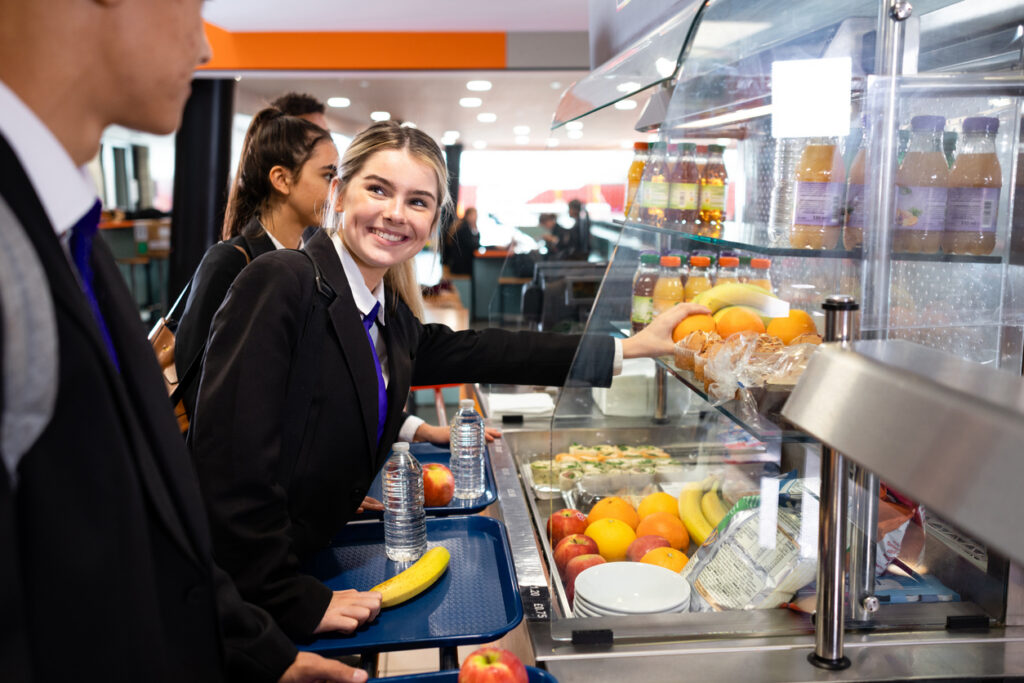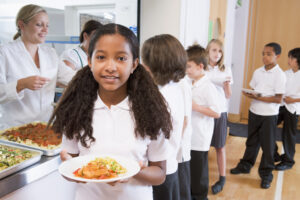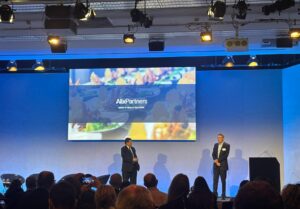With many secondary schools now operating in an increasingly competitive environment – whether that’s competing with local food outlets or simply vying for students’ attention during busy breaktimes – maximising meal uptake has become a key focus for catering teams. Encouraging more pupils to eat school meals not only improves the financial sustainability of catering operations but also supports healthier, more balanced diets for young people, and improved performance in school.
Mike Neales, Senior Consultant here at Litmus, who specialises in the education sector, shares some of the strategies we’re seeing schools successfully adopt to boost meal numbers across the day.
- Recognise the importance of mid-morning breaktime
In many schools, breaktime sales are now matching those at lunchtime. This trend shows just how important that mid-morning slot has become – particularly for students who might skip breakfast or prefer to refuel early.
Offering a well-thought-out, appealing range at breaktime can deliver multiple benefits. It helps spread demand across two meal periods, reducing queue times later in the day. It also gives pupils more flexibility over how they spend their lunch break, freeing up time for sport, clubs or socialising.
- Embrace flexibility with grab and go options
Today’s students want choice – not only in what they eat, but where and how they eat it. Many prefer to eat outside or on the move, and are often influenced by dishes they see on social media or from high street brands.
To meet this demand, grab and go options have become essential. These can include handheld hot options, boxed meals, or globally inspired dishes that reflect street food trends. Not only do they appeal to pupils’ desire for autonomy, but they also increase accessibility as pupils can buy food to eat later or outside the dining area and they result in quicker till transactions as the need to wait for the food to be plated up is removed. We’re even seeing self-serve kiosks being introduced to rapidly increase order and payment times.
From an operational perspective, many schools are finding efficiencies by designing menus that work across both formats. For example, a roast dinner can also appear as a grab and go hot pork roll with stuffing and apple sauce, giving pupils choice without adding complexity to production or procurement.
- Make your menu matter
Older students in particular are increasingly conscious of where their food comes from and the ethics behind it. Highlighting local suppliers, food provenance, or sustainability credentials can make a real difference in engagement.
Simple touches – such as displaying food miles, promoting partnerships with local producers, or spotlighting brands with strong ethical stories – all help create a sense of connection and trust. These messages resonate strongly with young people who are environmentally and socially aware, and they add depth to your school’s food offer.
- Keep the experience fresh
Beyond the food itself, meal uptake is influenced by the dining experience. Regularly refreshing menus, introducing limited-time themes, and incorporating pupil feedback keeps engagement high. Collaborating with student councils or running tasting sessions can also encourage ownership and excitement around the school’s food offer.
- Generating new sales
It’s worth considering offering an end of school day service for pupils who want something to eat or drink on the way home – it’s often a time when students welcome a snack. There is also the option to open the catering department to support any commercial lets the school may offer such as use of the Astro turf pitches to local sports clubs. There is not only the influx of youngsters to these fixtures, but also parents who are watching on the sidelines.
We work with schools nationwide to develop catering strategies that meet both operational and financial goals – while ensuring pupils are excited about the food available to them. By combining insight into student behaviours with smart menu planning and operational efficiency, schools can drive sustained improvements in meal uptake and satisfaction.
If you’d like to understand how your school or trust could benefit from our expertise, get in touch with us here.
The Litmus team











